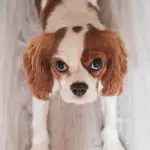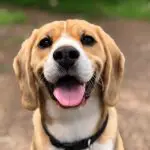A basic guide to the pug breed standard
Could that little dog at the animal shelter be a Pug? It’s quite possible. According to the Humane Society of the United States, twenty-five percent of all abandoned dogs are purebreds. Considering that several million dogs are abandoned in America a year, that’s a lot of purebred dogs in shelters. You can help identify the breed or breeds of a shelter dog with the help of breed standards.
To best use a Pug breed standard, you need to look at the Pug’s face straight on and then look at the rest of the body in a profile. With most other breeds of dogs, you can just look at their profiles and then compare them to various breed standards. But the face of a Pug is essential to the breed and can only be best seen directly. Your shelter dog will not match the Pug breed standard exactly – but no Pug can. The breed standard is an ideal portrait of a Pug, not based on an actual Pug.
Look directly into the potential Pug’s face. You should be turned into a puddle of warm goop inside. Pugs were bred to be cuter than nature intended a cute dog to be. They have big, lustrous black eyes, a button nose, a pushed in face with a nearly flat profile, and wrinkles all around the face. They have a slightly undershot bite and thin little semi-floppy ears. Due to the construction of their faces, they should make a lot more noise than the average dog.
The head will look too big for the legs, but will seem to be in proportion to the body. The skull should be round, broad like a little Bulldog and solid. The body should also be a bit round and broad like a little Bulldog. The topline (spine) should be level, with a curly tail. Ideally, the tail should completely curl, but this doesn’t happen in all Pugs. Their legs look too short for their bodies, but not so stunted like a Dachshund’s legs.
Another important aspect about Pugs featured in their breed standard is about their temperaments. This was a breed bred to be a companion pet, so they must get along very well with people and other dogs. Pugs are to be outgoing, even-tempered and full of charm. They love attention and often will move metaphorical mountains in order to be the center of everything. Although they are playful, they are not to get too carried away with silliness.
The breed standard is based on a fictional ideal Pug, so almost every Pug you meet is going to come up short in one point or more. Common faults include too long a nose, too tall or heavy a dog, an overshot or even bite instead of the preferred undershot bite, dewclaws, not enough curl in the tail, and not the right color or the right amount of colors in proportion to the desired body part. These Pugs, although not being able to win show trophies, still can win your heart as a pet.


